Visualization Of The World’s Shipping Routes
Each year, more than 11 billion tons of stuff gets carried around the world by large ships. Clothes, flat-screen TVs, grain, cars, oil — transporting these goods from port to port is what makes the global economy go ’round.
Now there’s a great way to visualize this entire process, through this stunning interactive map from the UCL Energy Institute:
[iframe width=”100%” height=”480″ src=”https://www.shipmap.org/”].You can use the toggles at the top of the map to break down the ships by type — container ships (yellow), dry bulk carriers (blue), oil and fuel tankers (red), gas carriers (green), and ships transporting vehicles (purple) — or zoom in on different regions.
The researchers assembled data from the thousands of commercial ships that moved across the ocean in 2012. They then worked with the data visualization studio Kiln to make this map. Here are a few neat highlights from playing around with the thing:
1) You can trace the outlines of continents solely by looking at shipping routes
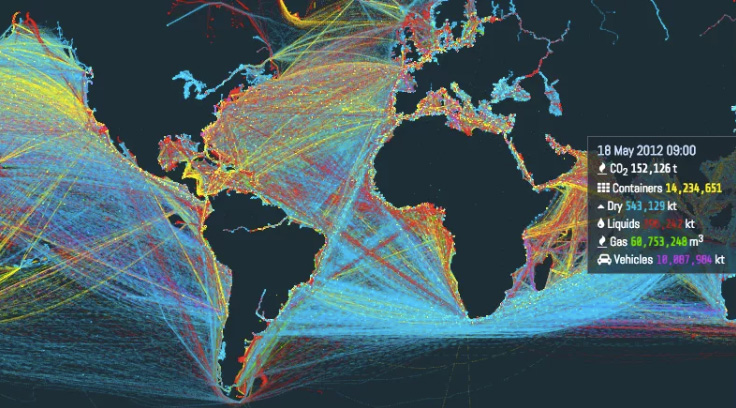
You can toggle the map so that it only shows major shipping routes and nothing else. Even here, you can clearly see the continents, save for the region above the Arctic circle, where few ships travel. (Though that may change as summer sea ice keeps receding.)
You can also see a few of the major river routes where large ships can navigate — like the Amazon River in northern Brazil, or the St. Lawrence River that allows ships to travel from the Atlantic to the Great Lakes, or the complex Volga-Baltic waterway in Russia.
It’s also easy to spot some hubs of the global economy with this map. The red lines above trace ships carrying liquid fuels — crude oil or gasoline. As you can see, both Louisiana and Texas are major hydrocarbon hubs. There are also thick red lines streaming out of the Valdez Terminal in Alaska, which is at the southern end of the Alaska Pipeline, bringing oil from fields in the north.
2) There’s a major shipping choke point around Malaysia and Singapore
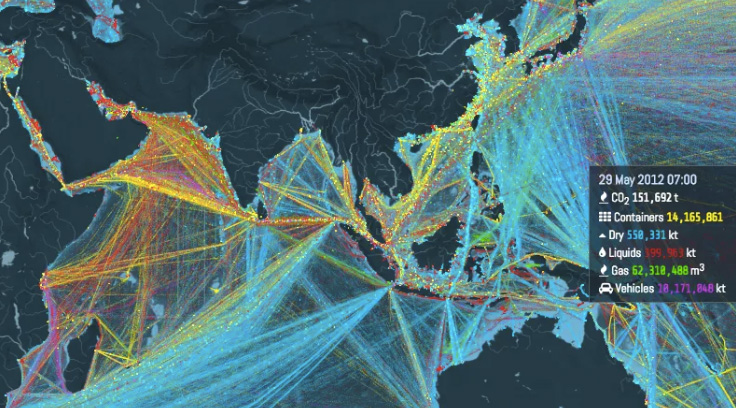
One of the most important shipping lanes on the planet is the Strait of Malacca, the shortest route between the Pacific and Indian Oceans, which you can see here as a congested line of ships traveling past Singapore, Malaysia, and Indonesia. About 40 percent of world trade passes through this strait each year, including much of the crude oil that goes from the Middle East to China.
But the narrow strait is also vulnerable to disruption — and in recent years, there’s been an uptick of pirate attacks in these straits. Technically, the three bordering states — Singapore, Malaysia, and Indonesia — are responsible for security in this region, defending it against piracy, but because it’s so crucial, the US, China, India, and Japan have all provided assistance in securing the region.
Unfortunately, there’s no easy way around. Ships that can’t fit through the strait (its minimum depth is about 82 feet) have to take a detour of thousands of miles further south.
3) In 2012, most ships steered clear of Somalia
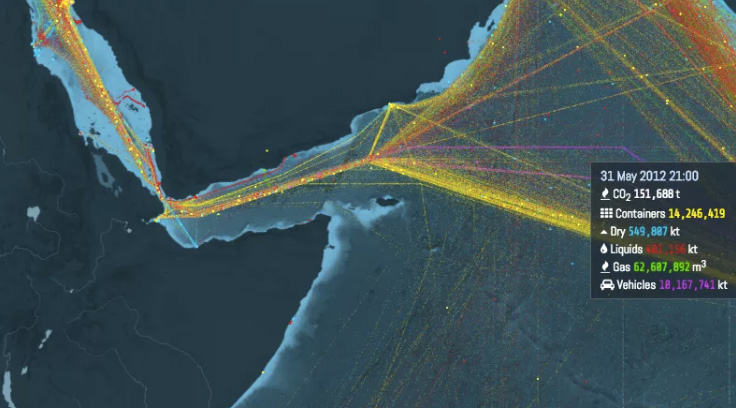
Starting around 2005, armed pirates from Somalia began stepping up raids on ships traveling around the Horn of Africa. Some analysts argued that illegal fishing by foreign boats in the region had initially driven many Somali fishermen to form armed militias to defend their waters. But those groups later turned to seizing cargo ships and holding the crews for ransom.
By 2012, pirates were costing commercial ships between $900 million and $3.3 billion per year. And, as you can see from the maps above, many ships were steering clear of Somalia’s coast after emerging from the Mandeb Strait between Yemen and Djibouti, which leads up to the Suez Canal.
But that was also peak Somali piracy. In the years since, raids seems to have declined dramatically. Shipping companies increased their on-boat security while various militaries deployed armed ships to patrol the region. By most accounts, it seems to have worked.
4) Ships have to move in neat routes through tight spaces like the English Channel

The researchers note that “while ships can move freely through the open ocean, routes are predetermined closer to land.” This is evident in the English Channel, where ships need to move in nice, neat lanes — as if it were a two-lane highway.
5) You can see ships waiting their turn at the Panama Canal
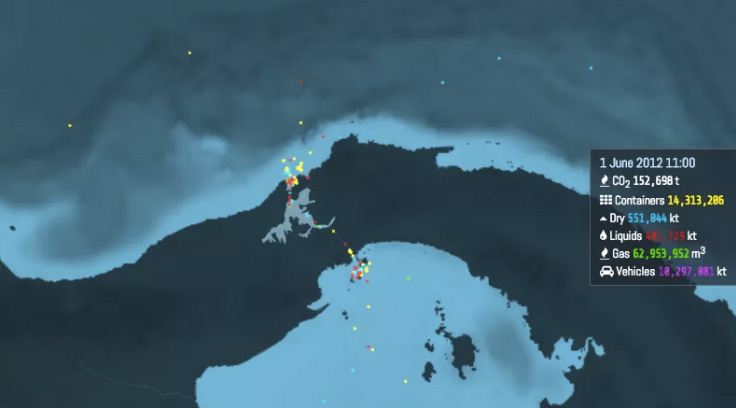
Each year, nearly 15,000 ships pass through the Panama Canal connecting the Pacific and Atlantic Oceans. Only a few ships can go through the narrow locks at a time as they are slowly raised and lowered using water from the lake above. So ships anchor outside the canal, sometimes for weeks, while they wait their allotted turn. (All told, about 30 to 40 large ships pass through the canal each day.)
To handle the next generation of large container ships, the Panama Canal is undergoing an expansion, with an additional set of locks on both the Atlantic and the Pacific. Even this expansion, however, won’t be able to handle the very largest set of container ships — which can be as big as four football fields laid end-to-end.
So what do those behemoths do? Nicaragua has thought about building its own, bigger canal to accommodate these ships, but that may never get built (and is a fiasco for a whole host of reasons). So, for now, the big ships still have to go all the way around South America.
6) The world’s ships are a major source of carbon dioxide emissions
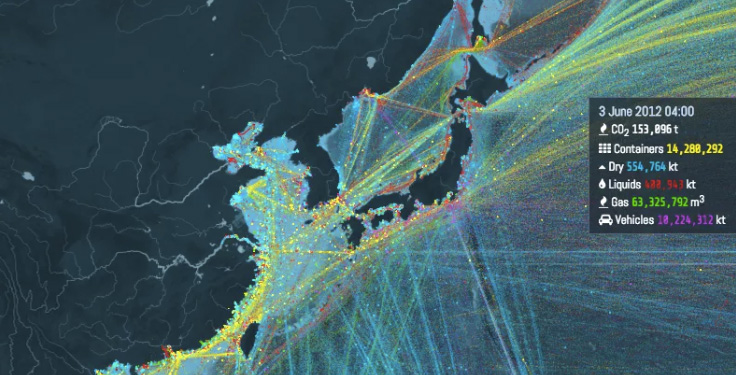
There’s a huge cost to all this shipping. The ships have to burn a lot of bunker fuel, and in 2012, they ended up emitting some 796 million tons of carbon dioxide. The researchers note that that’s more than “the whole of the UK, Canada or Brazil emit in a year.” Or, put another way, shipping is responsible for some 3 to 4 percent of man-made greenhouse gas emissions.
Now, this is still much more efficient than shipping all that stuff by land or air. Still, researchers have been looking into ways to shrink the shipping industry’s carbon footprint. Nate Berg ran through some of the best ideas here: “From technological improvements such as retrofitted rudders and propellers to enhanced weather routing, shipping companies are eyeing many ways to improve their efficiency.”
the full article can be found here courtesy of vox.com

